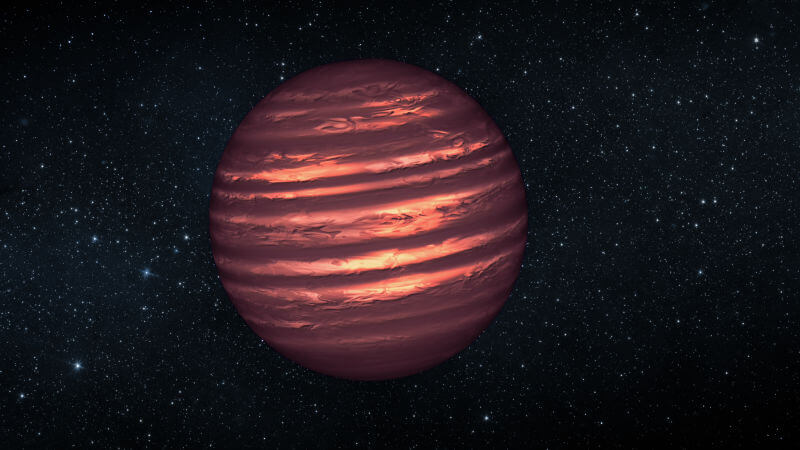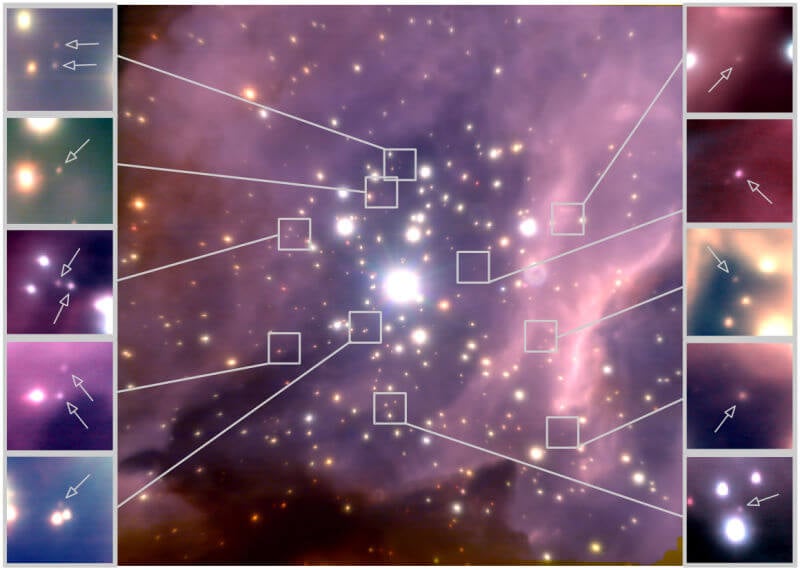
Astronomers estimate that the milky Way contains at least 100 billion brown dwarfs – stellar objects that were not able to turn into a full-fledged star. Research shows how much is actually distributed, this type of stars in our galaxy, and what active part they take in the formation of new stars. The figures show that 2-3 star other classes have at least 1 brown dwarf.
This type of space objects clearly stands out from the rest. They are too big and hot (15-80 times more massive than our Jupiter), to be classified as planets, but too small to be a full stars – they do not have enough mass to sustain stable fusion of hydrogen in the core. However, brown dwarfs are initially formed the same way as regular stars, so they are often called failed stars.
In 2013, astronomers began to suspect that brown dwarfs are a rather frequent phenomenon in our galaxy, by counting the approximate number of them in the region of 70 billion. However, new data presented at the conference National Astronomy Meeting, which was held recently in English the University of hull, talking about the fact that these space objects in our galaxy may contain about 100 billion. If you consider that the entire milky Way may contain estimates up to 400 billion stars, the number of brown dwarfs at the same time impressive and disappointing.
To Refine the results, astronomers conducted a study of over a thousand brown dwarfs within a radius of 1500 light years. As the star of this class is very dull, watching them over long distances is extremely difficult, if not impossible task. Most of the known brown dwarfs were discovered in the areas of formation of new stars known as clusters. One of these clusters is NGC object 133, which contains almost as many brown dwarfs as regular stars.
It seemed very strange for Alex Scholz from St. Andrews University and his colleagues Koraliki, Music from the Lisbon University. For a more detailed understanding of the frequency of the birth of brown dwarfs within star clusters of different densities, the researchers decided to look for more distant dwarfs in a dense star cluster RCW38.
To be able to consider the distant cluster, located about 5,000 light years from us, the astronomers used the camera NACO adaptive optics mounted on ESO’s Very large telescope of the European southern Observatory. As with the previous observations, the scientists also found that the number of brown dwarfs in this cluster is accounting for almost half of the total number of is in it of stars, which in turn suggests that the frequency of the birth of brown dwarfs does not depend on the composition of stellar clusters.

A color image of the nucleus of the young, but massive star cluster RCW 38, the data for which was obtained using the adaptive optics camera NACO, installed on the Very large telescope of the European southern Observatory
“We found a large number of brown dwarfs in these clusters. It turns out that regardless of the type of clusters, such stars quite often. And since brown dwarfs are formed along with other stars in clusters, we can conclude that our galaxy is really a lot,” commented Scholz.
We can talk about the figure of 100 billion. However, they can be even more. Recall that brown dwarfs are very dim stellar objects, which further dim their representatives could not get in sight of astronomers.
At the time of writing this article the latest findings of Scholz expected critical third-party validation scientists, however, the first comments about these observations portal Gizmodo gave the astronomer John Homer from the College of St. Miguel, who did not participate in the work, but consider that what is reflected in her figures may be correct.
“They come to the number 100 billion, making a lot of assumptions to do this. But in fact the conclusion about the number of brown dwarfs in the star cluster built on the so-called initial mass function describing the mass distribution of stars in the cluster. When you are aware of such a function and you know the rate at which a galaxy forms stars, then you can calculate the number of stars of a certain type. So if you omit a couple of assumptions the number 100 billion really seem real,” commented Homer.
And comparing the amount of brown dwarfs in two different clusters – dense and a less dense distribution of stars – the researchers showed that the environment in which stars appear, is not always the key factor governing the frequency of occurrence of this type of stellar objects.
“The formation of brown dwarfs is a universal and integral part of star formation in General,” says Homer.
Professor Abel Mendez from the Laboratory for the study of the habitability of planets (Planetary Habitability Laboratory), another astronomer who also was not involved in discussing the study, said that the figures in the new work can really make sense, especially when you consider the fact that in our galaxy a significantly more compact stellar objects than larger ones.
“Little red dwarfs, for example, are much more common all other types of stars. So I would assume that the new figure is probably even lower limit,” says Mendez.
There are, of course, the downside of such fertility of brown dwarfs. Large number of failed stars meant a reduction in potential habitability. Mendez says that brown dwarfs are not stable enough to maintain the environment, which is called the habitable zone. In addition, not all astronomers like the term “failed star”.
“Personally, I prefer not to call brown dwarfs “failed stars” as, in my opinion, they just don’t deserve the title of stars,” comments Jacqueline Faherty, astrophysicist at the American Museum of natural history.
“I would rather call them “planets are too old”, or simply “swashplate” as terms of indicators of their mass, they are still closer to these astronomical objects, rather than to the stars,” the scientist said.
In our galaxy of 100 billion stars failed. And that’s bad news
Nikolai Khizhnyak